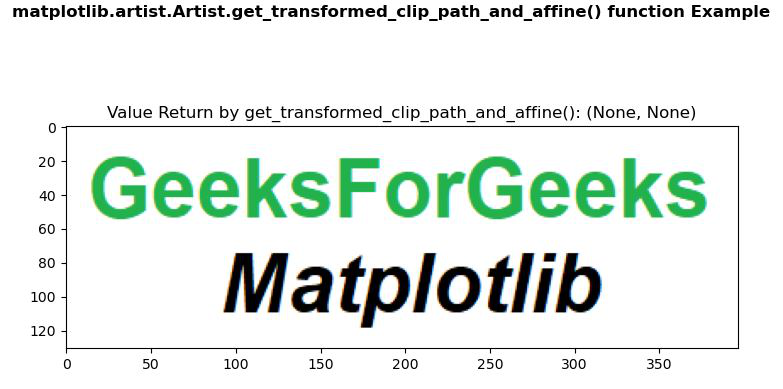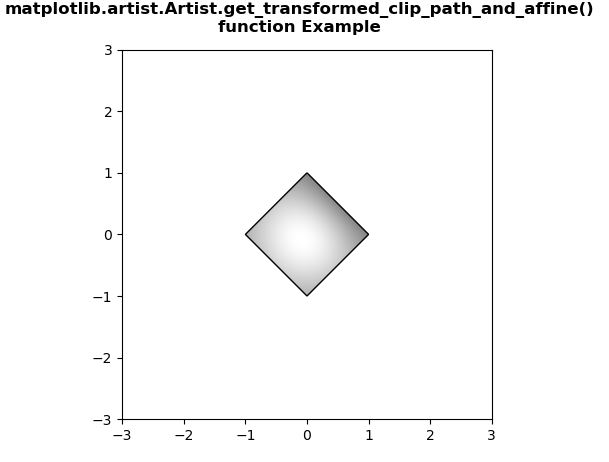Matplotlib.artist.artist.get_transformed_clip_path_and_affine()
Python matplotlib库的artist模块中的get_transformed_clip_path_and_affine()方法 用于获取应用了其转换的非仿射部分以及其转换的其余仿射部分的剪辑路径。
语法: Artist.get_transformed_clip_path_and_affine (self)
参数:该方法不接受任何参数。
返回: 该方法返回应用了非affine变换部分的剪辑路径,以及剩余的affine变换部分。
下面的例子说明了matplotlib.artist.artist。 get_transformed_clip_path_and_affine ()函数在matplotlib:
示例1
图像使用:

# Implementation of matplotlib function
from matplotlib.artist import Artist
import matplotlib.pyplot as plt
import matplotlib.patches as patches
import matplotlib.cbook as cbook
with cbook.get_sample_data('image.PNG') as image_file:
image = plt.imread(image_file)
fig, ax = plt.subplots()
im = ax.imshow(image)
patch = patches.Rectangle((0, 0), 260, 200,
transform = ax.transData)
# use of get_transformed_clip_path_and_affine() method
val = Artist.get_transformed_clip_path_and_affine(im)
ax.set_title("Value Return by get_transformed_clip_path_and_affine(): "
+ str(val))
fig.suptitle('matplotlib.artist.Artist.get_transformed_clip_path_and_affine() \
function Example', fontweight="bold")
plt.show()
输出:
示例2
# Implementation of matplotlib function
from matplotlib.artist import Artist
import numpy as np
import matplotlib.cm as cm
import matplotlib.pyplot as plt
from matplotlib.path import Path
from matplotlib.patches import PathPatch
delta = 0.025
x = y = np.arange(-3.0, 3.0, delta)
X, Y = np.meshgrid(x, y)
Z1 = np.exp(-X**2 - Y**2)
Z2 = np.exp(-(X - 1)**2 - (Y - 1)**2)
Z = (Z1 - Z2) * 2
path = Path([[0, 1], [1, 0], [0, -1], [-1, 0], [0, 1]])
patch = PathPatch(path, facecolor ='none')
fig, ax = plt.subplots()
ax.add_patch(patch)
im = ax.imshow(Z,
interpolation ='bilinear',
cmap = cm.gray,
origin ='lower',
extent =[-3, 3, -3, 3],
clip_path = patch,
clip_on = True)
# use of get_transformed_clip_path_and_affine() method
val = Artist.get_transformed_clip_path_and_affine(im)
print("Value Return by get_transformed_clip_path_and_affine(): ")
for i in val:
print(i)
fig.suptitle("""matplotlib.artist.Artist.get_transformed_clip_path_and_affine()
function Example""", fontweight="bold")
plt.show()
输出:
Value Return by get_transformed_clip_path_and_affine():
Path(array([[ 0., 1.],
[ 1., 0.],
[ 0., -1.],
[-1., 0.],
[ 0., 1.]]), None)
Affine2D(
[[ 82.66666667 0. 328. ]
[ 0. 61.6 237.6 ]
[ 0. 0. 1. ]])
 极客教程
极客教程
